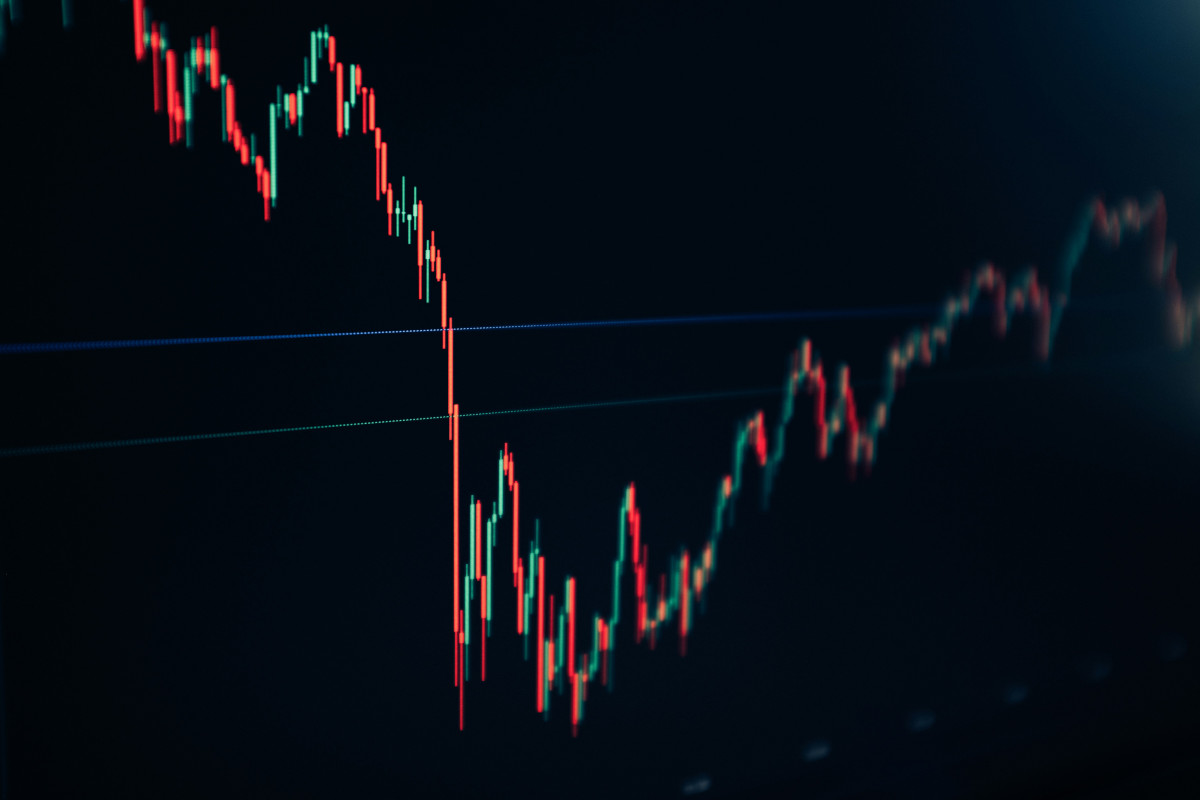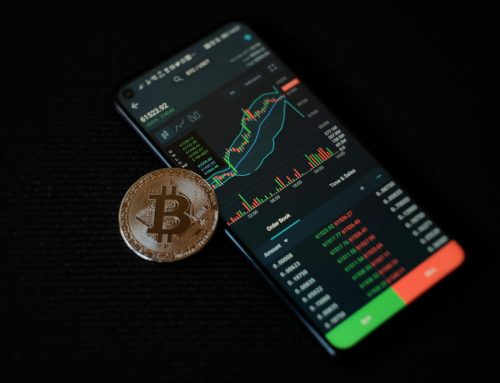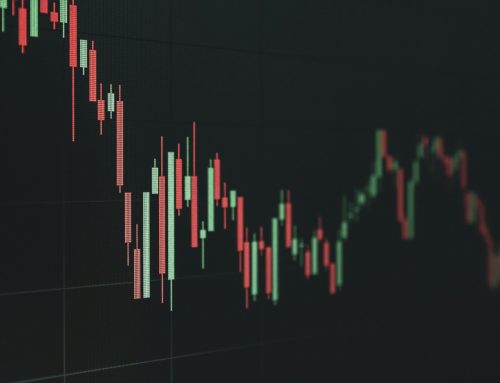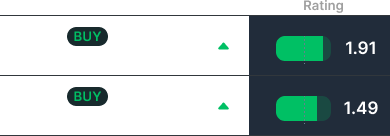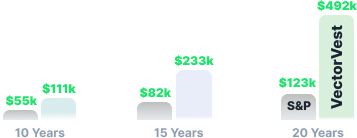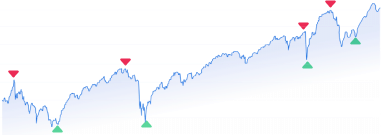Whether you’re just getting started investing or looking to pivot from what you’re currently doing, there are so many different investment vehicles at your disposal.
You’re probably plenty familiar with trading stocks as the most popular way to invest your money in the market. But what’s the difference between futures and stocks? We’ll compare and contrast trading futures vs stocks below to help you understand the nuances at hand.
Trading stocks is a lot more straightforward. You can log into your brokerage and invest in a company you believe will be successful in the long run (buy and hold), or simply see potential for price appreciation in (day trading or swing trading).
On the other hand, trading futures is a bit more complicated. You’re basically entering into a contract, agreeing to buy or sell an asset at a future date for a predetermined price. That could be a commodity, index, or even an interest rate.
We’ve got a lot to cover as we break down trading stocks vs futures, from risk and volatility to leverage and tax treatment. So, let’s not waste any time!
Trading Futures vs Stocks at a Glance
| Factor | Stocks | Futures |
| Ownership | You own a share of the company | You enter a contract to buy/sell an asset at a future date |
| Asset Types | Primarily company shares (equities) | Commodities, indexes, currencies, interest rates — not typically individual stocks |
| Trading Hours | Generally market hours (9:30 AM to 4 PM ET) | Extended trading hours, often nearly 24/6 |
| Leverage | Limited leverage unless using margin (usually up to 2:1 for retail investors) | High leverage built-in; can control large contracts with relatively small capital |
| Profit Potential | Lower short-term returns, but strong long-term growth and compounding through dividends and price appreciation | Higher short-term profit potential due to leverage, but also significantly higher risk of losses in long run |
| Risk Profile | Generally lower volatility and risk for long-term investors | High risk due to leverage and rapid price swings |
| Capital Requirements | Can get started with any amount of money | Requires maintaining margin; can lead to margin calls |
| Ease of Use | Simpler to understand and trade with retail platforms | Complex contract structures; steeper learning curve |
What’s the Difference Between Futures and Stocks?
Futures and stocks both give you exposure to the market, but they operate very differently. Stocks represent ownership in a company, while futures are contracts that let you speculate on price movements in a wide range of assets.
So, what’s the difference between futures and stocks, and which best suits your goals as an investor? We need to fully explain each of these separately to effectively compare and contrast futures vs stocks trading.
Overview of Trading Stocks
You’re purchasing a small piece of a company when you buy a stock. You have a claim to earnings, dividends, and long-term growth – albeit a very small one.
It’s straightforward, though. Your shares of the company rise in value if said company grows and performs well. The opposite is true, though, too. Your investment will dwindle down if the company reports negative growth or is hit by poor investor sentiment.
You can hold stocks as long as you like – less than a day, or multiple years. Most investors start here because it’s familiar, accessible, and relatively low-risk compared to leveraged alternatives.
Stock trading is also incredibly flexible as far as how you do it. You can go long, short, swing trade, or buy and hold. It supports every style and time horizon.
You’ll use a combination of technical and fundamental analysis to make your decisions, OR, you can work smarter with a stock advisory that does the heavy lifting for you. VectorVest, for example, tells you what to buy, when to buy it, and when to sell it.
Of course, stock trading isn’t risk-free. Markets fluctuate. Emotions can creep in. But these things are all manageable with the right strategy and support. That’s why setting yourself up for success with the VectorVest stock analysis software is so smart.
Overview of Trading Futures
Futures are contracts that let you agree to buy or sell something at a specific price on a set date. You’re not getting any ownership with a futures contract. Instead, you’re just trading price movements.
Most futures contracts are tied to commodities, indexes, or interest rates, though some stock futures exist as well. These contracts are often leveraged, meaning a small amount of money can control a much larger position.
That leverage cuts both ways, though. Yes, it can amplify your gains. But it can also magnify your losses. You’ll need to constantly monitor conditions, understand margin requirements, and be in tune with your emotions enough to handle fast swings. You’re working with expiration dates, rollovers, and tighter risk windows than with stocks. The stakes are a bit higher.
You also need a strong grasp of technical analysis, macro trends, and asset-specific dynamics. For example, trading crude oil futures calls for totally different knowledge than trading the S&P 500 index.
It’s a highly active trading strategy, and honestly, not the best starting point for beginners. That said, experienced traders can absolutely make futures work. There’s just a steeper learning curve in comparing futures vs stocks trading.
You can learn more about the difference between options and futures in our blog, as they’re closely connected. But let’s narrow our focus to the differences between trading stocks vs futures below.
Trading Stocks vs Futures: Which Strategy is Right For You?
One isn’t inherently “better” than the other in talking about trading futures vs stocks. One investor may be better suited to trading futures, while stocks are more up your alley. It all depends on your goals, risk tolerance, and a few other factors.
Let’s start with the biggest difference between futures and stocks…
Ownership vs Contractual Obligation
You’re buying actual ownership in a company when you trade stocks. You hold the asset itself, and benefit from short and long-term price appreciation. You could even earn regular payments from the company’s profits if you invest in blue-chip dividend stocks.
Futures work differently. You’re not owning anything. Rather, you’re agreeing to buy or sell a specific asset at a future date, at a set price. You’re trading obligations – not equity. That distinction matters.
You’re locked into terms with futures, and those contracts come with built-in expiration dates, rollover needs, and margin requirements. This is to say stocks offer a simpler experience if you want flexibility, control, and actual ownership.
Risk and Volatility Profiles
No investment strategy is risk-free. But, this is an important distinction between trading futures vs stocks.
Stocks fluctuate, sometimes a lot. In general, though, the risk is easier to understand and manage. You can control your exposure by choosing stable companies, using stop losses, or holding through temporary swings.
Plus, the path gets even smoother with a tried-and-true system behind your decision-making, like VectorVest’s Buy/Sell/Hold ratings and timing indicators. This takes a lot of the guesswork out of your investment strategy.
On the other hand, futures can be a little more volatile. They’re highly leveraged, react quickly to market news, and often involve assets like commodities or currencies, which can swing wildly on macro headlines.
This isn’t necessarily a bad thing – but it does mean you need to be vigilant of global catalysts, monitor positions constantly, and accept that losses can stack up fast. Like we said earlier, it’s a more active, involved approach to investing.
Leverage and Capital Efficiency
We’ve talked about leverage a lot throughout this comparison of stocks vs futures. It’s actually what draws a lot of investors into the idea of trading futures in the first place. You can control large positions with a relatively small amount of capital.
Sounds great, until it’s not. That leverage cuts both ways. A 2% move in your favor is great. A 2% move against you could mean a margin call or a blown account.
Stock trading has fewer surprises in that regard. Yes, you can still use margin – but you don’t have to. You decide how aggressive to be. Most brokers also offer fractional shares now, so you can build a diversified portfolio without needing thousands up front.
Trading Hours and Market Access
We’re asked all the time, is the stock market open on weekends? Regular US market hours are 9:30 AM to 4:00 PM Eastern, Monday through Friday. Some brokers also offer pre-market and after-hours trading, but liquidity is usually pretty thin during those periods.
In contrast, futures trade nearly 24 hours a day, five days a week. That’s a double-edged sword. Yes, you get more flexibility (especially if trading non-US assets or have a day job). But it also means the market never really sleeps, and overnight moves can catch you off guard.
Tax Treatment and Regulation
The tax man is going to want a chunk of your profits no matter which you choose between futures vs stocks trading. The difference is in how much he’s going to steal from you.
Stocks are taxed under capital gains rules: short-term if you hold less than a year, long-term if you hold longer. Dividends also have their own tax rates. It’s relatively simple, especially if you use tax-advantaged accounts like IRAs or 401(k)s.
Futures fall under IRS Section 1256. This splits gains 60/40 between long-term and short-term rates regardless of how long you hold. That can be a blessing or a curse, depending on how you look at it. It may give you a tax advantage, but it definitely complicates things along the way.
So, Are Futures Better Than Stocks?
Not necessarily. While futures could be an exciting way to amplify gains if you’re an experienced trader with time to monitor the market daily, a strong handle on leverage, and a high risk tolerance, they’re overwhelming for most investors.
We recommend trading stocks for quite a few reasons, but the most prominent are this: they’re more stable, understandable, and flexible. You can start small, grow gradually, and feel confident hitting the ground running with the right tools.
Speaking of which…
Set Yourself Up For Success With VectorVest
VectorVest gives you objective ratings for 18,000+ stocks based on three factors: Value, Safety, and Timing. It’s known as the VST system, and it has helped millions of investors achieve their goal to outperform the S&P 500 index by 10x over the past 20 years and counting.
You can quickly see whether a stock is over- or under-valued, how consistent its fundamentals are, and whether now is a good time to buy or sell based on momentum trends. You also get market timing insights so you know when to trade and when to sit on the sidelines and wait.
You can follow pre-built stock screeners and model portfolios designed around specific goals, like dividend income, safe stocks for retirement, volatile stocks, and even industry-specific stocks.
There are a lot of solutions out there to help you win more trades with less work, but none quite like VectorVest. It’s the best Seeking Alpha alternative, Motley Fool alternative, Morningstar alternative, and TradingView alternative according to investors who made the switch.
But don’t just take our word for it. We want you to see the system in action for yourself. Get a free stock analysis and find out firsthand how simple and rewarding investing can be with the right support!
Final Words on Trading Futures vs Stocks
That concludes our deep dive into trading futures vs stocks! Both strategies have their place, but one probably resonates with you more than the other.
Futures may appeal to those seeking high leverage and short-term speculation, especially in commodities or indexes. But most investors appreciate the flexibility, transparency, and opportunity for long-term growth stocks have to offer.
You can explore other strategies in our blog if you’d like, as we have similar resources comparing ETFs vs stocks, swing trading vs options, and buying bonds vs stocks. Otherwise, the only thing left to do today is support your strategy with VectorVest.
Put your portfolio on autopilot with tools built to think like a pro!
What you should do next…
- Get our latest blogs delivered right to your inbox, subscribe to our newsletter.
- The market moves fast! Get our most current evaluation of this stock with our FREE stock analysis tool.
- Looking for stock picks? Not sure if now is the right time to buy/sell? For a limited time, enjoy the full benefits of a 30-day subscription to VectorVest for only [offer_txt] (usually up to [saving_txt]/month) . Get access to our full list of screeners showcasing our top stock picks that tell you exactly what to buy, when to buy, and when to sell.

